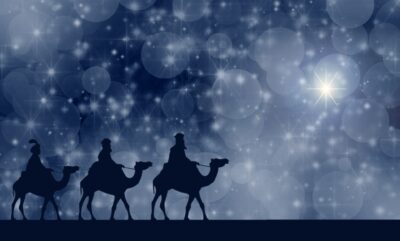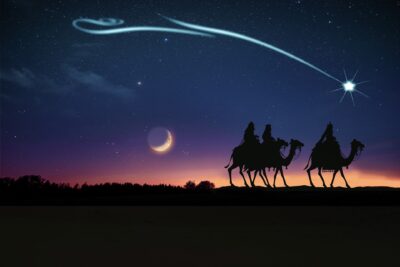 Some families probably like to just say “On your mark, get set, go” and have a free-for-all of gift opening. In our family we took turns opening our gifts, from youngest to oldest. I liked our way of doing it. So much time and effort is put into trying to make or shop for special things, then carefully wrapping each one. It seems sad when it’s all over in a matter of minutes. And it’s nice to be able to see who got what from whom. It’s also very nice to have a chance to watch the reaction when someone opens a gift. It’s especially nice to witness the reaction if you’re the one who gave the gift.
Some families probably like to just say “On your mark, get set, go” and have a free-for-all of gift opening. In our family we took turns opening our gifts, from youngest to oldest. I liked our way of doing it. So much time and effort is put into trying to make or shop for special things, then carefully wrapping each one. It seems sad when it’s all over in a matter of minutes. And it’s nice to be able to see who got what from whom. It’s also very nice to have a chance to watch the reaction when someone opens a gift. It’s especially nice to witness the reaction if you’re the one who gave the gift.
Here’s a game to make the gift-opening time fun and at the same time encourage guests to listen carefully to the Christmas story, rather than daydreaming about their gifts or thinking about getting the recipe for one of the goodies on the table.
- Two willing guests can take turns reading some Scriptures provided from the books of Matthew and Luke regarding the Christmas story.
- The family members under age 10 may then go ahead and take turns opening their gifts right after the reading.
- But before the older guests take a turn to open a gift (their first one if they have more than one), they must correctly answer a True or False Statement regarding the Christmas story, as revealed in the Scriptures read.
- If they answer wrongly, they will miss their turn to open a gift.
There are 20 True or False Statements. This should be enough for one round of opening for most gatherings. Guests will draw a True or False Statement from a basket or bowl.
 The Wise Men
The Wise Men
There are lots of interesting details regarding the Christmas story that are not commonly known, For instance, although nativity scenes often show the Three Wise Men, the Wise Men (called Magi [maj’-eye] in some versions) could not have visited the stable the night Jesus was born. The beginning of Matthew says they came to Jerusalem after Jesus was born. If they came from Babylon, as some believe, it may have taken four or five months to get to Jerusalem over ancient routes, after the star indicating Jesus’ birth appeared.
We don’t know how many Wise Men there were, either, since the Bible doesn’t say. There could have been two or a dozen. It’s just convenient to show three, since they presented gold, frankincense, and myrrh to Jesus. People often assign symbolism to the gifts—gold for royalty, frankincense (incense) for the worship of deity, and myrrh for the burial of his body after his death. Some say it is likely that the gifts financed the escape of Mary and Joseph with little Jesus to Egypt. The fact that Mary and Joseph offered doves or pigeons instead of a lamb as a sacrifice when they brought Jesus to the Temple proves that they were poor at that time.
There are so many questions about these Wise Men or “Magi.” Who were they? Where did they come from? How did they know the King of the Jews was to be born at that time? Why were they looking for a star to herald the birth of the King?
An article on the icr.org website, called “When They Saw the Star,” by Dr. Henry Morris, had some theories that seemed to make sense. The “Magi,” (who gave us the root of our word “magic”) may have originated in a tribe of Media. From the Matthew 2 passage, we know they were interested in astronomy and prophecy. Eventually, groups of Magi became associated with royal courts in Babylonia and Persia and served as consultants in Arabia and India.
The article states that it’s possible that the prophet Balaam, who prophesied in Numbers 27:17 that “A star will come out of Jacob, a scepter will rise out of Israel,” was associated with the Magi. Daniel was a “Wise Man” of influence in Babylon, and he prophesied the “70 weeks” in Daniel 9:24, which could have enabled these Wise Men to calculate the time of Jesus’ birth.
The appearance of a star at that time could have confirmed it.
Since some of the captured Jews stayed in Babylon, the article projects that it is even possible these Wise Men were Jewish by religion or birth. The reason Herod and the whole city may have been troubled by this entourage may have been that not only did they not want competition from another ruler, but the nations east of Judea were rival powers of Rome.
 To really ruin our Christmas card visions of the Wise Men, the article brings up the possibility that they may have travelled on horses instead of camels. No, I’m just not ready for that!
To really ruin our Christmas card visions of the Wise Men, the article brings up the possibility that they may have travelled on horses instead of camels. No, I’m just not ready for that!
Dr. Morris’ favored explanation for the star is a nova or super nova. But Matthew 2:9 says the star went ahead of them. God made the sun, moon, and stars, so He could have invented any kind of star He wanted for the occasion.
It’s interesting that “Herod” was the name of a family dynasty, tied to the Jews but commanded by the Romans. They were sometimes resented by the Jews, and some were notorious. There were actually six different “Herods” in the Bible.
Some of your guests might be curious about the circumstances surrounding Jesus’ birth, and perhaps you can discuss some of this extra information if they are wondering about them.
But wait until after they play the True or False Game to discuss it. You don’t want to give away any answers.
Everything you need for this True or False Game is provided, except the basket or bowl.
Just print one copy of the Host Remarks with the correct answers to the True or False Statements, print two copies of the Scriptures to be read by the two narrators, and print one copy of the True or False Statements. Then cut apart the True or False Statements, fold them up, and place them in a basket or bowl. Think of two guests who might be willing to take turns reading the Scripture narrative. Ask them ahead of time, if you think they might be reluctant.
To see a printable copy of the Host Remarks and Answers to the True or False Statements, CLICK HERE.
To see a printable copy of the Christmas Story Scriptures for the two readers, CLICK HERE.
To see a printable copy of the True or False Statements, CLICK HERE.






Leave A Comment